
Difficulty Level Easy Asked In Amazon, Adobe, Hike Three solutions Discussed Brute force approach — Using two nested loops Using extra space — Using…
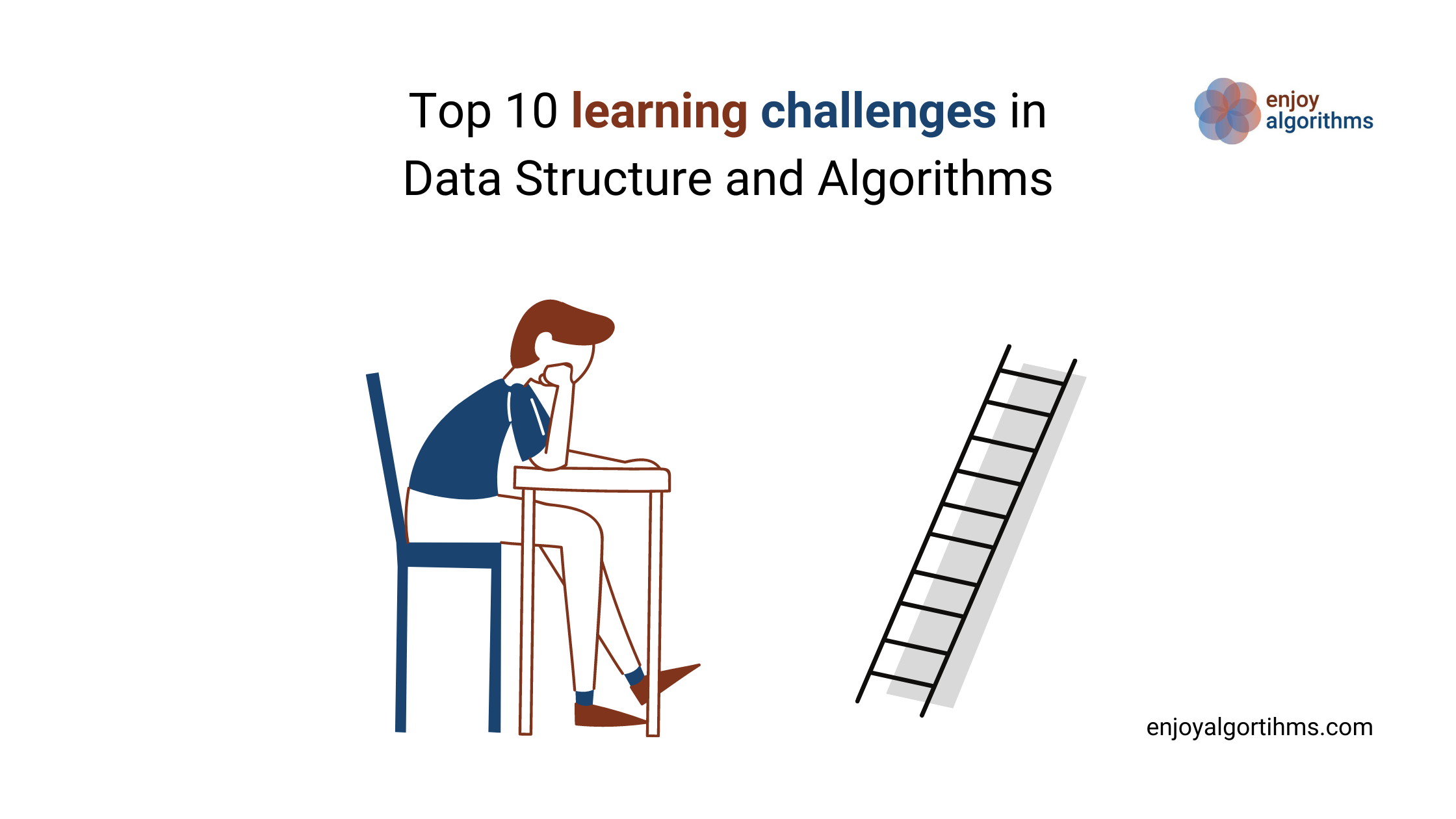
The data structure and algorithm provide a set of approaches to the programmer for handling the data efficiently. If the programmer does not know about data structure and algorithm, they may not write efficient and correct code for their software. So it is the fundamental building block of computer science and critical for career success. Let’s understand its importance from two different points of view —
 But here is a problem — though many content and guidance are available online, most of the programmers are struggling to become good at it and achieve interview success. After more than five years of teaching experience with thousands of students and professionals, sharing here the top 10 learning challenges in the Data structure and Algorithms.
But here is a problem — though many content and guidance are available online, most of the programmers are struggling to become good at it and achieve interview success. After more than five years of teaching experience with thousands of students and professionals, sharing here the top 10 learning challenges in the Data structure and Algorithms.
Most programmers have developed wrong perceptions about the data structure and algorithms due to poor learning practices. They have a widespread belief that the subject is complex and challenging to master. Unfortunately, such popular ideas transferred to a new programmer and hurt their learning data structure and algorithms' motivation.
Some programmers believe that the subject is only relevant for the interview's success. Still, the reality is much more than that — it is a core problem-solving skill in programming and part of several real-life applications.

Mastering data structure and algorithms require consistency. The real problem arises when we skip the practice for a long duration, affecting our conceptual depth and knowledge. When we try to learn again, we need to start from scratch. Even a lot of programmers are struggling to maintain long-term consistency and interest.
It is also related to the lack of long-term strategy where we need to plan different learning activities— study, revision, note preparation, problem-solving on paper, research, coding practice, community building, discussion, doubt resolution, mock interview, etc.
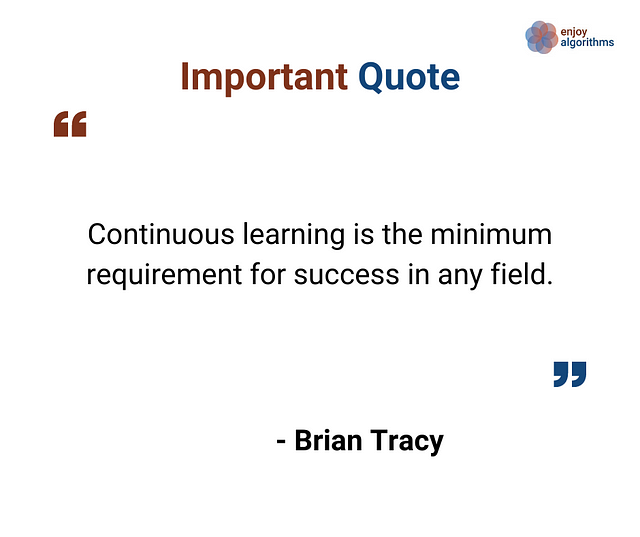 3. Dependencies of the topics
3. Dependencies of the topicsTopics in data structure and algorithms are dependent on each other, and programmers often learn concepts in a complex order. Sometimes we learn advanced topics before learning fundamentals. For example —
The idea is simple — we must follow the standard curriculum where topics have been organised in the proper order of difficulties and dependencies.
It is one of the critical issues in learning computer science — especially data structure and algorithms. Programmers often get trapped in tricky words and explanations to go through the same idea repeatedly. Sometimes they skip the topic without understanding the concept. It creates three critical problems:
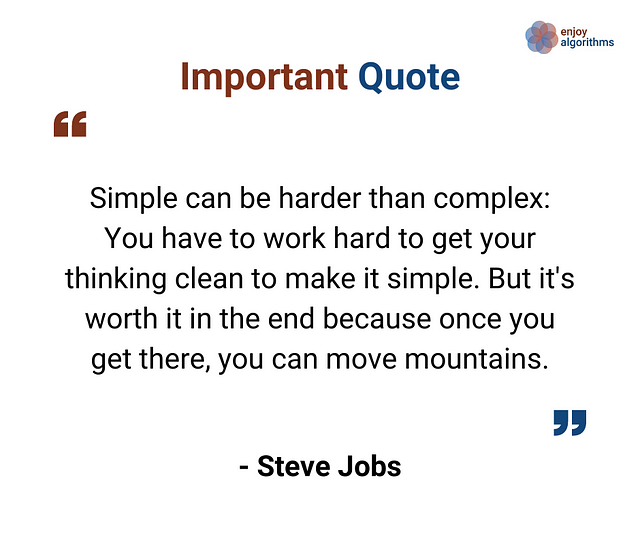 5. Memorising concept and solutions
5. Memorising concept and solutionsMemorisations never help in data structure and algorithms because there is a lot of things to memorise! It is a comfort zone where one resists understanding the reason behind the idea and avoid formulating a solution/code to the new problem. The best fact is that concepts or ideas are deeply inter-related, where thinking critically and logically is the best viable option. The attitude of memorisation is also a barrier in connecting dots and generating new solution insights. So avoid memorisation and follow reason oriented approach.
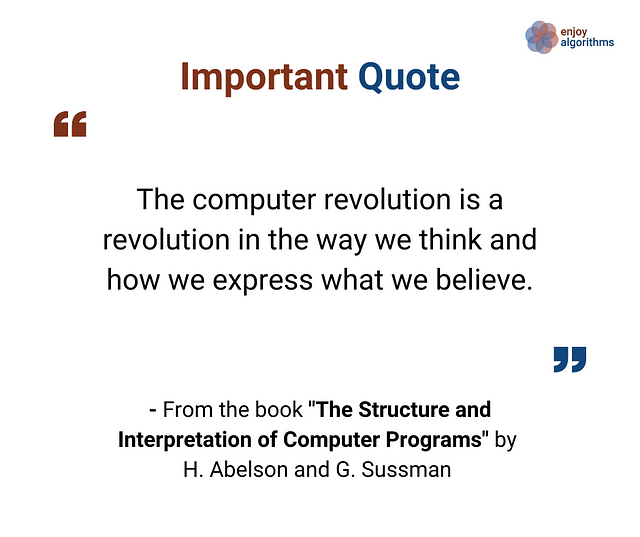 6. How to think of a solution idea?
6. How to think of a solution idea?Most programmers are good at implementing the solution, but the real challenge is thinking correct and efficient solution. Sometimes they solve many problems to improve this skill but still struggle to identify the correct solution. Why?
They avoid going into solution depth and always hurry to solve many problems rather than finding the pattern. Every programmer’s critical question is — how we think that the problem will get solved using any particular approach like DP, greedy, two-pointer, hashing, binary search, etc.?
 7. How to write the correct code
7. How to write the correct codeSometimes programmers struggle to write the correct code during the interview. If identifying a solution is an “art,” then designing a correct code is a “craft” that requires multiple skills. Here are some critical observations —
 8. Fear of maths logic
8. Fear of maths logicData structure and algorithms require the understanding of basic math topics like — permutations, counting, summation, numbers theory, bits operations, recurrence, etc. We mainly use such topics in analysing and comparing the efficiency of the algorithms.
Most of the programmers fear the analysis part unnecessarily. But the reality is just the opposite — It’s about counting the instructions for a large value of input size. Little practice can help to master this skill over a long time. 80% of the code analysis is just analytical skill of counting!
 9. Lack of interview skills
9. Lack of interview skillsIt isn’t easy to write working code during the interview while someone is closely verifying the progress. Even as an interviewee, we are supposed to communicate the thoughts loud and clear to the interviewer. Writing solution code and communicating simultaneously is an essential skill for career success, and we need to develop it with focus gradually.
Some critical skills for career success as a programmer are — Communication, Collaboration, Research skills, Profile building, Mastering behavioural interviews, etc. Sometimes we often ignore these skills and get rejected despite having good coding and problem-solving skills. Fact is — the interviewer is looking for a potential person for his/her company who can handle several critical situations smoothly during work.

Image Source: From the book "Computers and Intractability: A Guide to the Theory of NP-Completeness"
Learning data structure and algorithms requires a collaborative mindset. Sometimes we are stuck into critical doubts during the problem solving, which need an immediate solution. Even due to this, sometimes we are not able to move forward in problem solving. During the starting phase of coding, programmers feel unsure of what kind of question they should ask and get help from most skilled friends. Some developers like the discussion, but some others prefer to study alone.
So, it would be necessary for programmers to form a group or join a community where they help each other resolve each other's doubts. There is immense importance of discussion/brainstorming in learning problem-solving in data structure and algorithms.

Difficulty Level Easy Asked In Amazon, Adobe, Hike Three solutions Discussed Brute force approach — Using two nested loops Using extra space — Using…
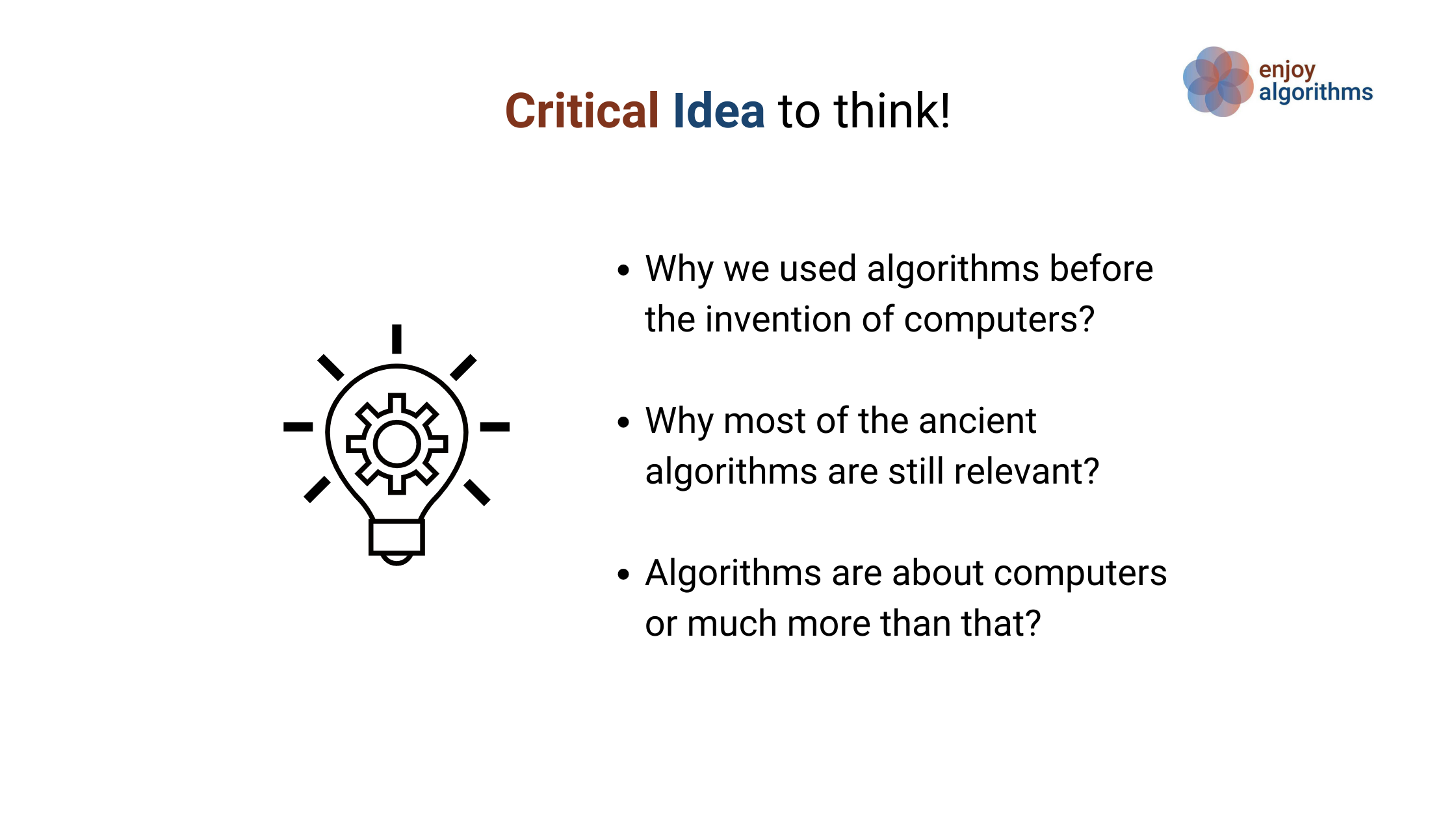
Algorithms have a long history, and the word can be traced back to the 9th century. At this time, the Persian mathematician Abdullah Muhammad bin Musa…

What is Competitive Programming? Competitive Programming is a programming sport involving many participants competing with each other to achieve…
Subscribe to get free weekly content on DSA, Machine Learning and System Design. Content will be delivered every Monday.